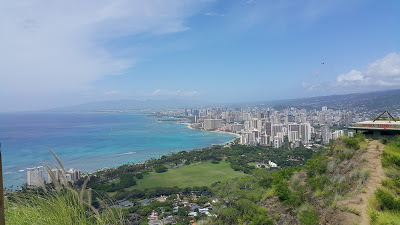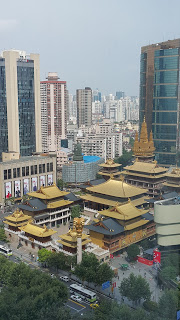 |
| Jing’An Temple |
One of the 974 things I like about Shanghai is the East meets West aspects.
Sadly though, a lot of the East is being reclaimed and turned into Western style shopping complexes among other things. This is not unique to Shanghai, it’s happening in Beijing, Hong Kong and many other areas that endeavour to compete on the world stage.
Is there that little faith in Eastern style construction and philosophies that they are not able to coexist with progress?
Is it because the creation of the new middle and upper class formerly occupied solely by government officials has eschewed the Eastern ways for capitalism, materialism and consumerism in favour of being more like the West? Why would they choose that when there are so many miserable, depressed and unhappy Westerners who have wholeheartedly embraced this thinking of more, more, more?
What’s more sad than this being solely a feature of purely recent economic progress, it began at the start of the Cultural Revolution. Under the “Four Olds Campaign” (old customs, culture, habits and ideas) which started in 1966, the Red Guard had free reign to destroy just about anything, including religious artefacts and cultural sites, since these “Olds” were never clearly defined. The public then joined the bandwagon embracing the reforms.
More recently, there has been an effort to restore some of these sites, partly due to the West becoming interested in China again. Interestingly, it’s also given rise to the production of counterfeit artefacts.
The Jing’An Temple, Temple of Peace & Tranquility, in Shanghai, is one of my favourites (aside from the Jade Temple which is my favourite and where I like to go for Chinese New Year). It’s had a bit of a rough time of things over its 780 years. Originally built in 247AD, it was moved in 1216, rebuilt sometime during the Qing Dynasty (1644-1912) before becoming a plastic factory during the Cultural Revolution. It was burnt to non-existence in 1972. In 1983, it became a temple again and was put on the list for key national protection. Finally, it was open to the public again in 1990 and in 2010, the Pagoda was completed.
It’s a survivor.
In the meantime, the French Concession area is shrinking, hutongs are being dismantled and there is little traditional housing remaining.
Hong Kong has its share of Heritage Listings. There are some rules surrounding what can and can’t be done however for those that have been here for a while and have seen many of these buildings razed to make way for modern ferry piers, residential developments and shopping centres, the rules seem fairly arbitrary. The cause is not helped when there is the appearance of being able to buy a different level of listing so adaptions can be made to a previously classified historic site.
To Hong Kong’s credit, rather than destroying Murray House (originally built in 1844), it was relocated from Central to Stanley Beach in order to make way for the Bank of China Tower. Over 3,000 bricks were pulled apart, labeled and put in storage in 1982 to then be reconstructed in 2001.
Not surprisingly, there were some bricks left over since and that’s why the House now has four additional pillars standing out the front. Useful for posing against for wedding photos.
Murray House has a tough history, albeit a bit shorter than the Jing’An Temple, from being officers’ quarters, through to the command centre for Japanese Military Police during their occupation of Hong Kong (apparently some Chinese citizens were executed there too), government offices, Hong Kong Maritime Museum and more recently, restaurants and shops. It’s even had two exorcisms by the government as it was believed to be haunted.
Japan seems to have done quite well in their combining of East and West ideals, architecture and philosophies. They seem to coexist. I’m not sure how they reconcile consumerism with Buddhism, but somehow they do. In spite of buildings and even a great deal of Tokyo being destroyed in World War II, there is a massive amount of cultural sites still in existence, including temples.
One of the other 974 things I like about travel is the opportunity to learn the history of the places I visit and to gain a greater understanding of how that influences how people think today. One of the things that saddens me, is the destruction of these artefacts and that those future generations will only know these places through the internet or whatever technology is prevalent at that point in time. There is such a sense of history and connectedness with these buildings to the people that there’s no telling what the personal impact is going to be on their destruction if it continues.
Given the nature of this post, it is surprising that no red wine was consumed during its writing. No buildings were harmed either.
* Thanks to Cher for the title to this post. If you’d like to see the iconic video clip…

